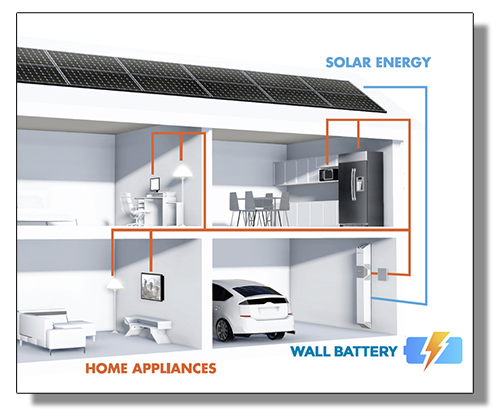Residential Energy Storage — Will it Work?
One of the holy grails of the energy industry has long been cheap energy storage. Unlike almost all other consumer goods, electricity is created and used in almost the same instant, and storing it has long proven to be difficult and expensive. However, in the last decade, the price of batteries has fallen dramatically, and new energy storage models are emerging. One model that has captured the public's imagination is residential energy storage, which allows you to store electricity at your home for your own use. Homeowners are often interested in energy storage for one or more of the following reasons:
- To store excess energy from their solar panels
- To take advantage of time-of-use
rates to buy power when it's cheaper

- To have back-up power when the grid goes down
- To go entirely off the grid
Let's take a look at a few energy storage technologies.
First, for storing excess energy from solar panels, public power districts and electric co-ops typically have net metering policies in place with solar arrays that allow members to "bank" the extra electricity they produce with their utility and receive credit for that energy on their next bill. For this reason, Mateo Jaramillo, Tesla's director of powertrain business development, calls net metering "essentially a free battery."
Next, batteries can be used to lower peak charges for those members who pay a variable price for electricity depending on their use. In fact, most already have an energy storage device in their home-their water heater. Rural electric utilities have a long history of controlling water heaters as part of their demand response programs, and many offer rebates or other incentives to participate in utility-run programs.
Third, batteries such as the Tesla PowerWall, assuming they're fully charged when the power goes out, can keep a home running for about four to six hours at normal consumption. If used only for critical loads, the battery can last much longer. For many consumers, purchasing a residential standby generator that runs on fossil fuel would be a cheaper option. Even though the generator will have a higher fuel consumption cost, the average rural co-op member only experiences about two outages a year. It's important to remember, however, that in addition to higher fuel costs, generators are noisy and potentially dangerous if run inside the home without proper ventilation and useless without fuel, which can be hard to obtain during a weatherrelated emergency.
Finally, one major goal of storage is to couple it with solar energy and go entirely off grid, but many fail to realize the cost involved in sizing a solar and storage system for independent use. Without the grid to rely on, the homeowner must size their system for the worst-case scenario of the year. Depending on geographic location, this could mean designing a system that is able to keep running after several cloudy days in a row, or adding a back-up generator. Most will find that the cost of a larger battery and back-up power system don't justify the savings of being off the grid. However, cost trends for both solar and storage are declining, making these home systems more viable-especially in areas with higher power costs.
Energy storage technologies continue to evolve rapidly, and it's likely they will be even more cost competitive for many applications within a few years. But many of the potential benefits of a home battery can already be reached through other means. Utilities are also exploring new ways to provide value to consumers through residential energy storage. Green Mountain Power, a utility provider in Vermont, is offering Tesla Powerwalls to its consumers with the option to purchase directly, lease or buy with utility control and receive a bill credit. As programs like this continue to develop and proliferate, consumers can expect to see more batteries in and around the home.